MND Anatomy Retrospective
VM Retrospective - March 2025
At the end of a strange March, I’m really happy to have released MND Anatomy. I had the opportunity to attend the Game Developers Conference last month because of the work put in and potential of Vine Moss so far, and while it was a surreal experience I’m undoubtedly grateful for, it did mean my workload for Vine Moss would have to account for the week I wouldn’t be able to make progress on this game. However, March’s VM Game is out in the open, and simply put, I’m satisfied with how it went. MND Anatomy completes the CLOCKS, COPIES, CARDS theme set, where mundane objects and concepts were turned on their head and used to tell realistic stories related to the ups and downs in relationships new and old. Just like with the previous VM Games of 2025, I’m sharing my 3 rights and 3 wrongs during this month’s development.
3 Rights
Simpler Art Approach + Expanding My Art Tools
I’m extremely proud of how the art style for MND Anatomy turned out, especially considering how much of a time investment the February VM Game Doppelspeak was when it came to illustrating the individual visual panels. I wanted to create an art style that was simple yet appealing, so going for monochromatic characters against a grainy off-white background fit exactly that. I designed Amari and the rest of the MND Anatomy cast pretty early on, and I didn’t feel the need to adjust their designs after the first pass, which feels essential to stay on track with such an accelerated timeline for these VM Games.
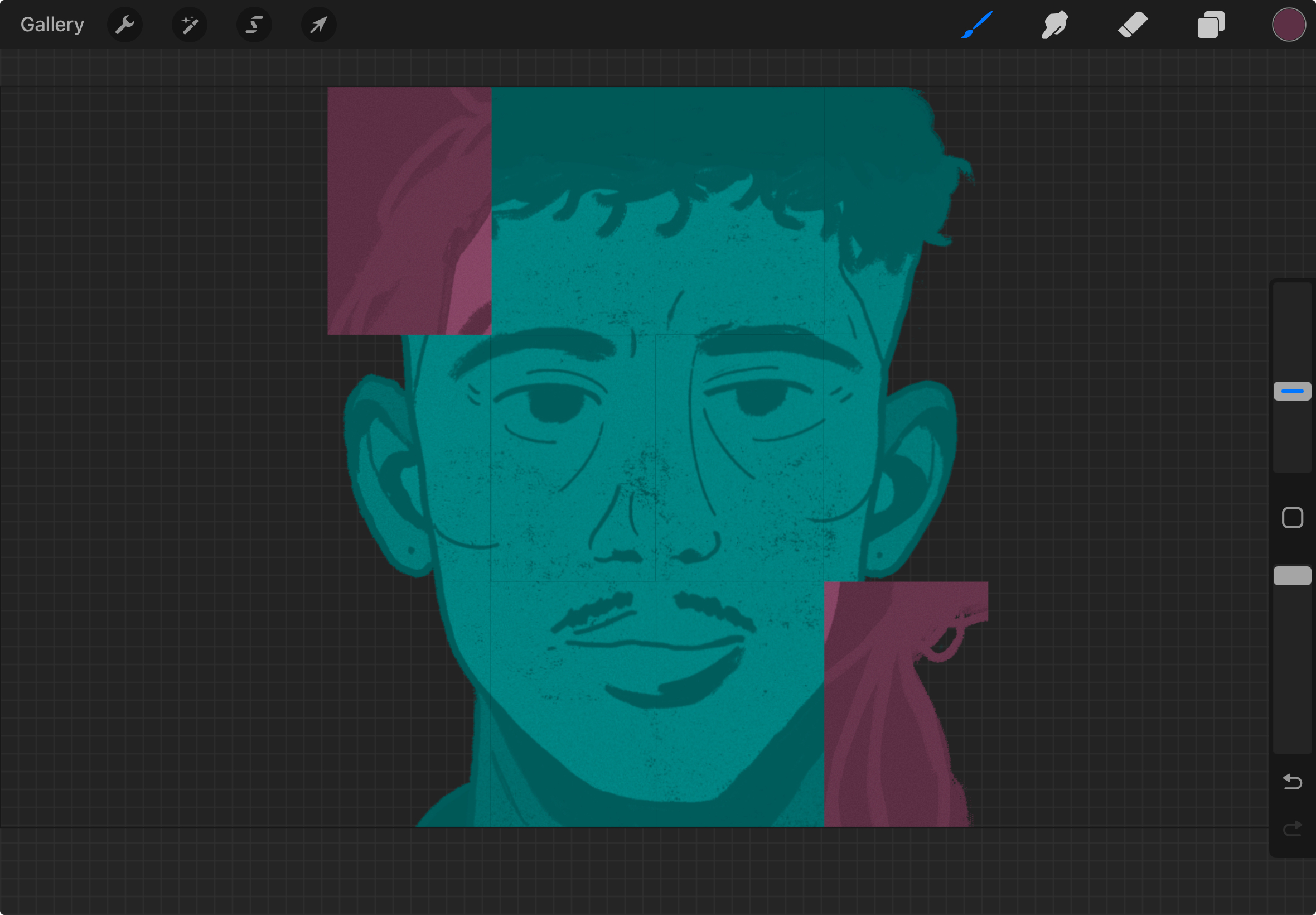
As for my art toolkit, this is the first VM Game where not all the assets are digital drawn. The card edges, for example, were created using Canva shapes. While the card edges would have been simple to draw, I wanted to ensure that my cards were even, clean, and consistent because of how often they would be flipping throughout the game. Importing my divided images and turning them into cards felt a lot easier this way while adding to the simple and neat look I was going for this game. This process helped me realize that I shouldn’t be afraid to utilize different aspects of my toolkit to make my workload a lot easier - whenever there’s an opportunity to combine different software for my art pipelines and make a better, non-generative, creative asset , I should try it out and save time that can be used for other parts of the game.
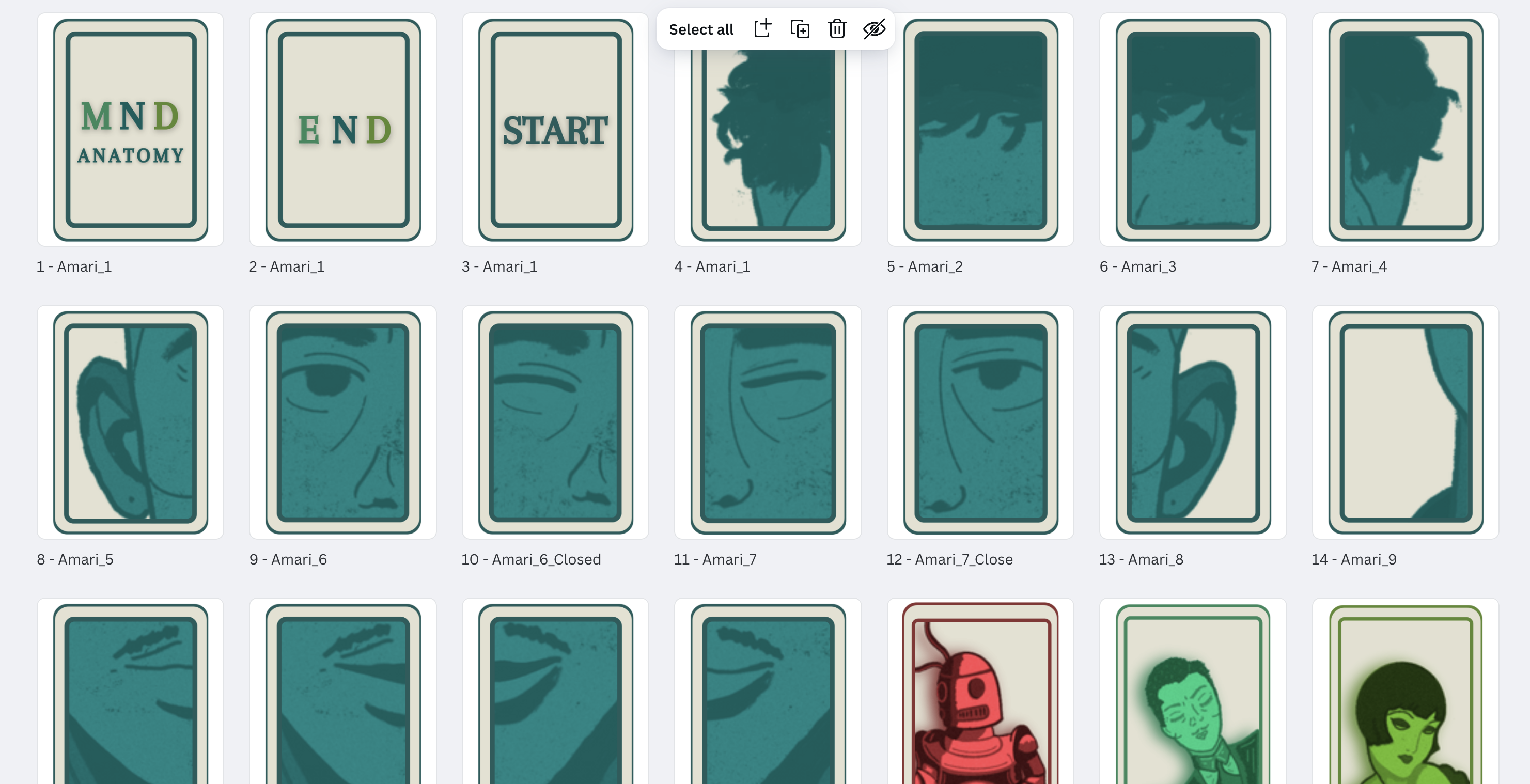
Overall, I’m happy to have created something I love going back to and looking at, and I see this style as something I would love to experiment and expand upon in the future.
Text Box Upgrades
In addition to utilizing canva for the card’s in MND Anatomy, I also designed the text boxes using a Canva shape with rounded corners and an outline that matches the color of the characters in the game. Since this is the first VM game that has several characters speaking throughout the game, I didn’t feel confident that just the text box positions and audio would be as effective in differentiating which character is speaking. Adding this slight color change for each character feels good, and it only required a few lines of code to track which character spoke when and which text box to display on screen.
I also made two big adjustments to the text for this game specifically: audio per word and displaying by word instead of by letter. For the audio feature, I cued up a sound to play everytime a space was included in a dialogue line, which added some energy to the dialogue lines not really found in the previous VM Games. As for changing from letter by letter to word by word for how the dialogue would display, it only required me to adjust timers already included in the VM Dialogue Manager, and I thought this would add some sharpness to the characters and amplify the humor of the game. Both features are big additions to the VM Dialogue Manager that I’m really looking forward to using in future VM Games this year, so I’m glad to have created it for MND Anatomy.
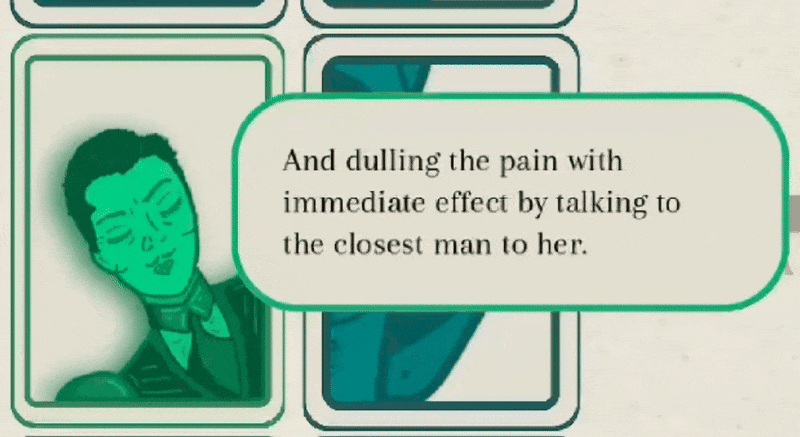
Better Scope, Better Process
After three months of intense game development, I knew I needed to find a way to better balance my practice with the other parts of my life I put to the side, especially when GDC would significantly alter my development timeline. MND Anatomy generally was more concise and utilized less assets compared to the previous VM games, which is the result of scoping better and deciding on the most essential pieces in order to create the atmosphere and send the specific message I wanted for MND Anatomy. While I did have some late nights working on this game, I feel a lot better with how production went and how I set out on created a more limited game that is still the around the same length as the previous VM games.
3 Wrongs
The Pushing Writing Pattern
For the third VM Game in a row, I found myself writing the story up until the last moment. Despite my effort in trying to write out my games’ script before working on other aspects of development, I found a way to push it off and work on other parts of the game that were more appealing in the moment. I was extremely excited by this story and its cast of characters, but that excitement didn’t translate to an easy or consistent flow of dialogue lines. Whenever I sat down to write, I struggled for hours to stay focused on the narrative at hand, let alone write something good. It’s in part because of my background as a writer that makes it so difficult. I’m often left paralyzed because I want to figure out my story points and interesting arcs as I freely write out my stories, but the accelerated development timeline makes me concerned about wasting time figuring those narrative points out. I’m left deciding what to do in those writing sessions and feeling unmotivated to tackle writing altogether when other parts of the game can be worked on in those blocks of time.
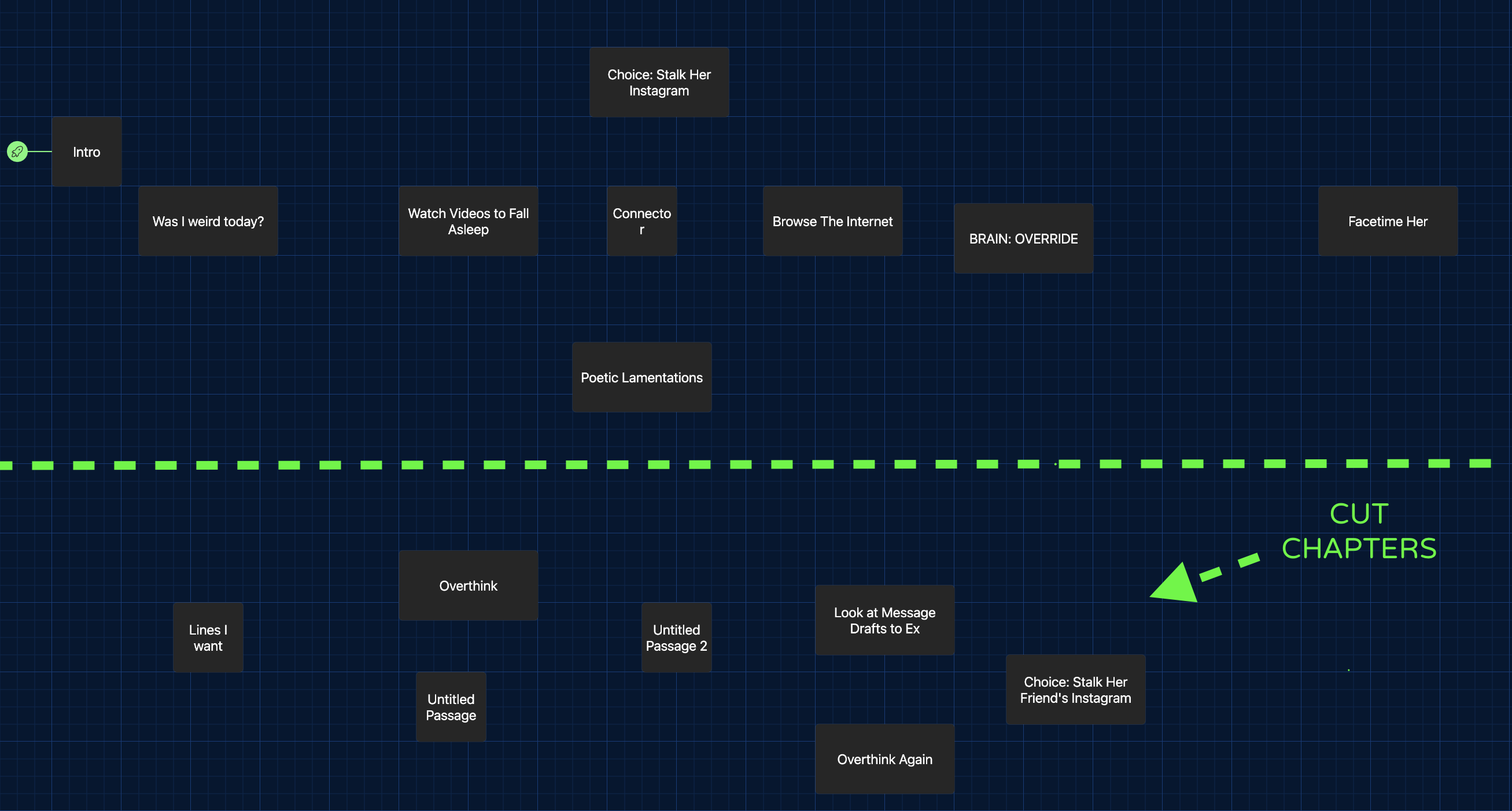
It’s really been a challenging aspect of these games, and it makes me strongly consider my approach to the next theme set in terms of how much writing will go into it. I might end up prioritizing mechanical/gameplay features for storytelling over dialogue lines, but perhaps I’ll have a change of heart once I fully thought out the story for May’s VM Game. Either way, I’m going to try to significantly change my approach to writing and rediscover my narrative motivation through some kind of experimentation and reflection - characteristics of true VM Games!
Late Night Push To Complete
In the last week of development for MND Anatomy, I tried to schedule tasks for each day so that I wouldn’t have to stay up too late on the last day of the game’s development cycle. However despite those project management efforts, I had a late night sprint to the finish in order to publish MND Anatomy with all of it’s accessory assets. This wrong boils down to not considering tasks like making the itch page and the social release posts when planning, and those tasks end up taking longer than I think they do (which is related to the last wrong too). Overall, I want to find a way to avoid this hectic last day, trying to get everything in order before release. This will require some production and management adjustments that relate to a major development goal for me moving forward:
Setting Achievable Goals
As I reflect on last month’s development cycle, and honestly the way my workload has looked for most of my career, I struggle when it comes to setting goals that are achievable within the time I set for them. I often take a lot longer working on a task than I think I will, and it’s such a consistent habit of mine to put several tasks on the board for the day that I know deep down I won’t fully get through. In those moments I tell myself “I just need to completely focus and get these done,” but the sheer amount of tasks I set for myself ends up adding a mental load that takes me out of my work flow. It becomes a bad cycle of underestimating the amount of time it takes for each task, setting too many tasks for a day, and feeling unmotivated to work altogether. A big point of improvement for me moving forward will be setting more achievable goals, especially when it comes to adding more time to tasks I usually think will take less time. It’ll help my overall development timeline and motivation when I can learn to not overload my plate every day and instead take a reasonable amount of tasks, especially so I can rest and make time for other parts of my life without stress.
What's Packed For The Horizon
It feels surreal to have released three games already this year, and I’m still trying to process the amount of art and creation this theme set included. In Time On Distance, Doppelspeak, and MND Anatomy all feel distinct and ambitious - from their conception to the final builds - and I couldn’t be more happy to have made these works within the constraints I designed for myself.
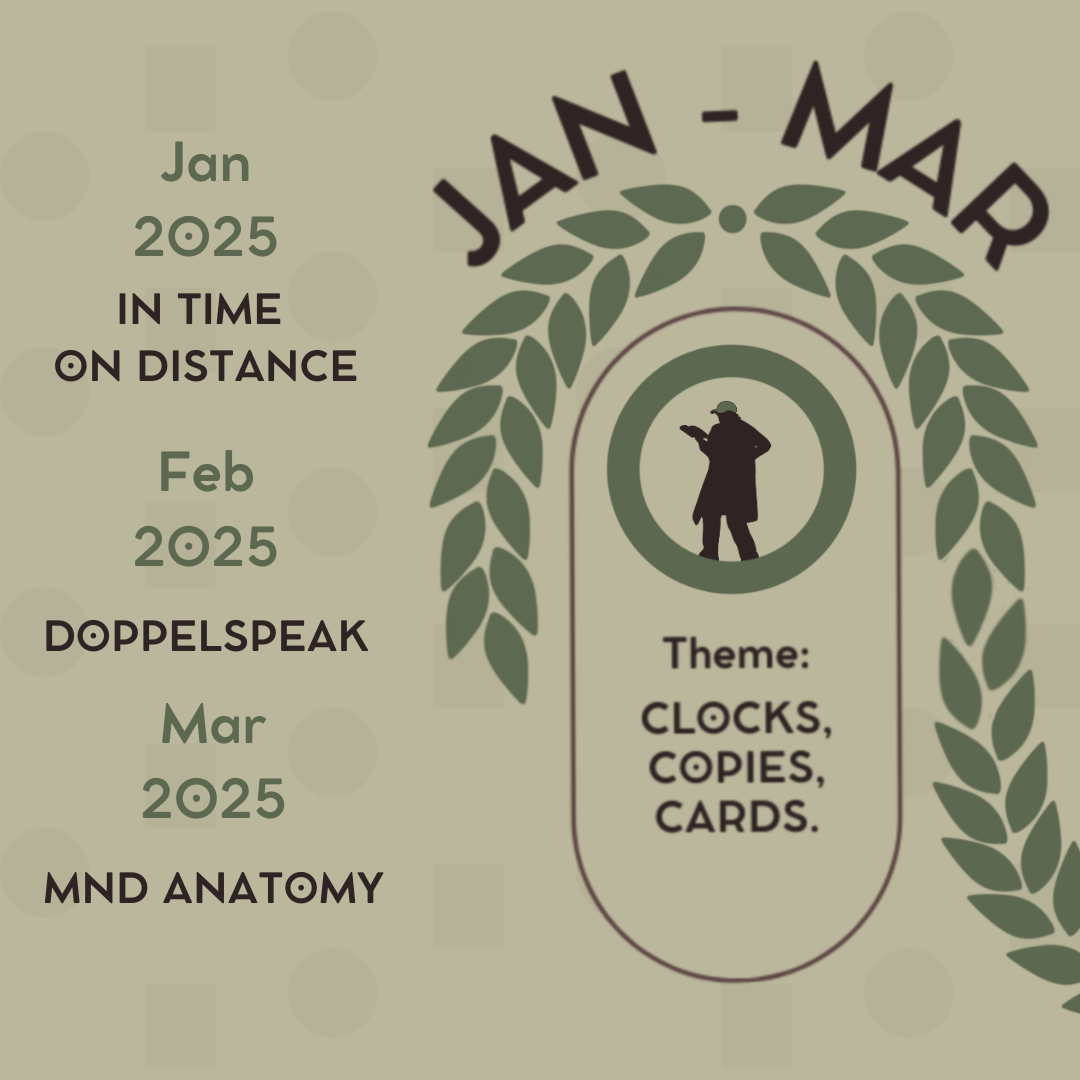
The amount of support and positive feedback I’ve received throughout the first quarter of the year has been indescribable. My dream is to create experimental yet inviting art that resonates with an audience looking for something new, genuine, and filled with passion. Through these first few games, I feel accomplished in pursuit of that dream, and I’m so motivated to continue being creative and pressing on for the rest of the year.
There are nine more games in store for 2025, and this upcoming game is a Vignette Break - a short, textless experience that shares a heartfelt message in an unconventional, interactive way. I’m so excited to share this new work, and I hope to connect to more people, share MND Anatomy and the other VM Games, and continue to pursue this challenging but fulfilling dream.
Thank you for your support of Vine Moss Games - there’s so much more in store. Thank you also for reading this retrospective on MND Anatomy, and be on the lookout this month for the free, browser-based Vignette Break dropping this month ~
~ Dev

Files
Get MND Anatomy
MND Anatomy
Amari Mallory's mind-bending night, post dinner date.
| Status | Released |
| Authors | Vine Moss Games, Devinne |
| Genre | Visual Novel |
| Tags | 2D, artgame, Atmospheric, Experimental, Godot, Hand-drawn, Indie, Narrative, No AI, Short |
| Languages | English |
| Accessibility | One button |
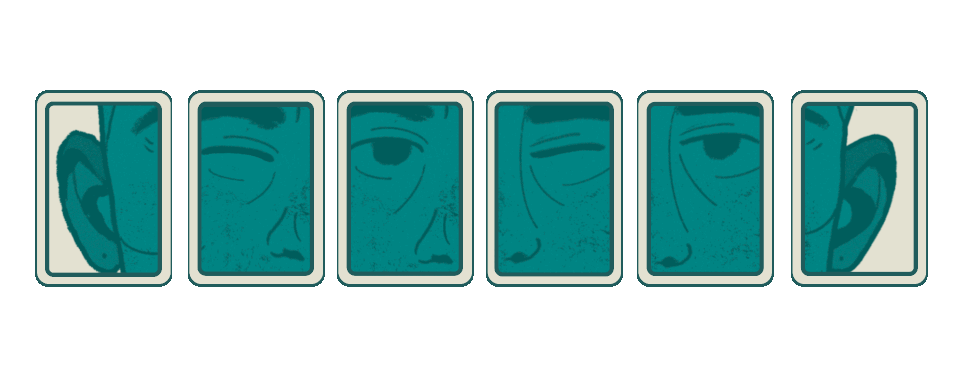
Leave a comment
Log in with itch.io to leave a comment.